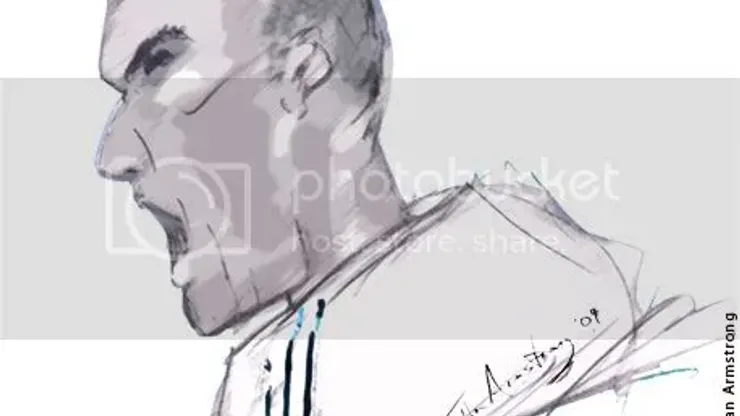Who knew staring at a sweaty, stoic Frenchman for ninety-three minutes could be this rewarding?
Filmmakers Douglas Gordon and Philippe Parreno must have suspected such when they set out to create Zidane: A 21st Century Portrait. The film was shot in 2005, released (limited) in 2006, but is now finally starting to reach a wider audience. I saw the film at Boston’s Museum of Fine Arts last week, not really sure how the approach focusing on a single player for an entire match would succeed.
Televised association football is generally a collection of wide shots. The camera wants to be a giant ladle, gulping up as much information as possible for most of the broadcast, focusing on narrower moments for the rare glimpse of fine sport detail. The viewer mostly wants to see where the next pass or shot might go, where the player is running, where the play will be unfolding. We want to be able to scream at the television: “The winger’s open! He’s bloody open!” (I’m an American, but bloody works itself into my vocabulary while watching football… and yes, I call it football.)
But in Zidane the wide angle becomes the rare moment, the contrast to the sharp focus that defines the film. We see the full pitch or most of it when the filmmakers want to give us a peek at the broader context with a clip of the televised feed. Otherwise, it is all Zidane.
We see him mostly off the ball. Mostly at a trot or walking or standing still. We spend a lot of time in tight on his face. Watching him watch the game. The playmaker studying the angles. The positions. Looking for his next move. He spits. He sweats. He yells, Hey! a lot. Points directions at the other Real players.
The film is as much an objet d’art as a sport document. The shift in perspective gives us, as the titles says, a portrait. We are used to seeing the team picture. Here we see the man. And the close focus, provided by an army of telephoto lenses, shows us the details of the man at work.
In the early parts of the film, Zidane has very little time on the ball. He doesn’t even run too much, keeping his position behind the strikers. When he does get the ball it’s often a quick pass to another player, and because we remain mostly focused on Zidane, we cannot see how his distribution affects the match. Later on, he spends more time on the ball when he recieves it. Begins to take it past the Villareal players. And one of the film’s most exciting moments comes some seventy minutes in when Zidane drags the ball down the left, beats a herd of defenders and chips the ball for Ronaldo to head into the goal. This is one of the only times we can see Zidane’s direct influence on the result.
Mostly we rely on a different set of clues than usual to figure out what is happening in the match. The whistle blows, the crowd howls and we try to read in Zidane’s face whether it was a penalty, a free kick or what.
But these events are meant to be side notes. The piece is about the man and not the match.
As the ninety minute mark approached, I wondered where was the passionate Zidane? The man who was known for his temper? The man who was ejected from the 2006 World Cup final for headbutting Marco Materazzi? He barely shows any emotion throughout the film, finally sharing a smile with Roberto Carlos toward the end.
Then, in a melee that begins out of our frame of vision, we see Zidane’s fires flare up. Soon, he’s in the middle of the fracas. Then, David Beckham is holding him back and talking him down. And then, there it is: the red card held over Zidane’s head.
The film finishes with him taking the long walk. The match ends 2-1 to Real, but I only know that from looking it up on the internet later on.
This is a portrait of a man. The match result is incidental. The legend becomes human as we see the everyday details in crisp detail. It’s a different kind of film, but once you get used to the format, it turns out to be well-made document and a worthwhile hour-and-a-half for any serious lover of football.
200+ Channels With Sports & News
- Starting price: $33/mo. for fubo Latino Package
- Watch Premier League, Women’s World Cup, Euro 2024 & Gold Cup
The New Home of MLS
- Price: $14.99/mo. for MLS Season Pass
- Watch every MLS game including playoffs & Leagues Cup
Many Sports & ESPN Originals
- Price: $10.99/mo. (or get ESPN+, Hulu & Disney+ for $14.99/mo.)
- Features Bundesliga, LaLiga, Championship, & FA Cup
2,000+ soccer games per year
- Price: $5.99/mo
- Features Champions League, Serie A, Europa League & Brasileirāo
175 Premier League Games & PL TV
- Starting price: $5.99/mo. for Peacock Premium
- Watch 175 exclusive EPL games per season






